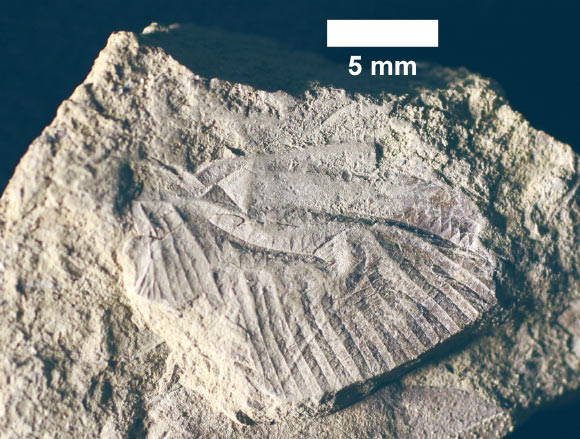Named Cordualadensa acorni, the new dragonfly species from Alberta’s Dinosaur Provincial Park represents the only Mesozoic dragonfly for Canada and fills a major 30-million-year gap in the evolutionary history of dragonflies.
Cordualadensa acorni. Image credit: Alex Anderson.
The fossilized wing of Cordualadensa acorni was discovered in 2023 by an undergraduate student from McGill University during a vertebrate paleontology field course in Dinosaur Provincial Park.
“We were excavating an area where many leaf fossils had been found by cracking rocks,” said McGill University paleontologist André Mueller.
“When the partial wing was uncovered, we were taken by surprise as we were not expecting to find any insects there.”
Because of the remarkable distinction and unique anatomy of Cordualadensa acorni, the authors even created a new family — named Cordualadensidae — to classify it.
“This is the first ever dinosaur-aged dragonfly found in Canada,” Mueller said.
“Its wingspan was about the width of a human hand, and while small, it would have been an important part of the Cretaceous ecosystem — a tasty raptor snack, no doubt.”

The fossilized wing of Cordualadensa acorni. Image credit: Mueller et al., doi: 10.1139/cjes-2024-0162.
“This discovery not only doubles our knowledge of insects from Dinosaur Provincial Park, but also represents a completely unknown preservation method, impression fossils, for insects fossils in the area,” said Dr. Alexandre Demers-Potvin, also of McGill University.
“We’ve now started finding more insect fossils by expanding where and how we search.”
“The diversity of insect life during this time was likely much greater than we thought.”
The discovery of Cordualadensa acorni helps fill a 30-million-year evolutionary gap.
It’s also the first known North American member of a large group of dragonflies called Cavilabiata.
“The wing anatomy tells us this species was adapted for gliding — a trait associated with migratory dragonflies today and possibly a key to their success,” said McGill University’s Professor Hans Larsson.
“This specimen also provides insight into what life was like in Canada 75 million years ago, adding an important new missing piece of the ecological puzzle of one of the most diverse dinosaur-bearing sites in the world.”
The team’s paper was published this month in the Canadian Journal of Earth Sciences.
_____
André S. Mueller et al. New family of fossil dragonfly (Odonata, Cavilabiata) from the late Cretaceous (Campanian) Dinosaur Park Formation, Alberta, Canada. Canadian Journal of Earth Sciences, published online August 1, 2025; doi: 10.1139/cjes-2024-0162
